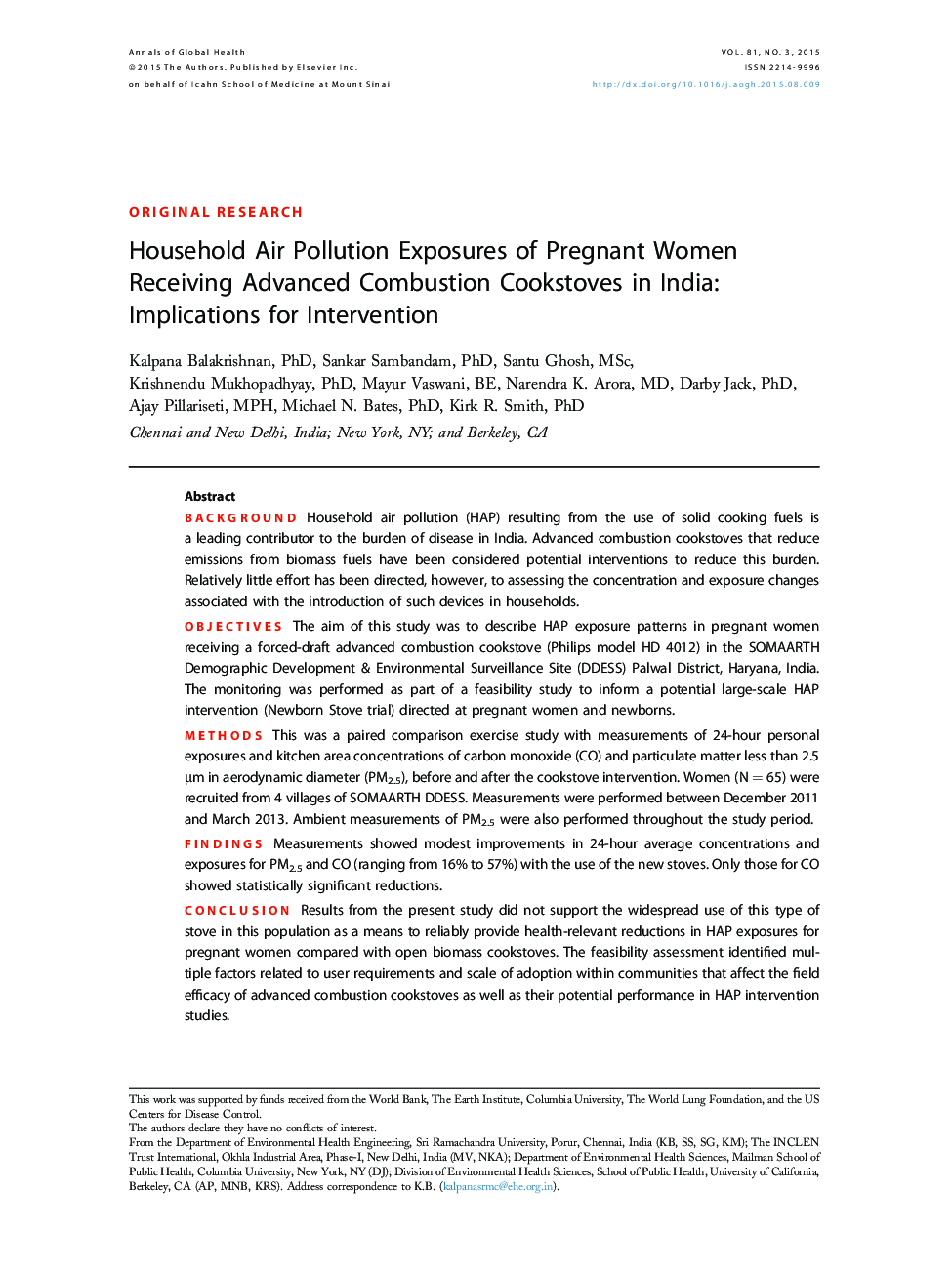| کد مقاله | کد نشریه | سال انتشار | مقاله انگلیسی | نسخه تمام متن |
|---|---|---|---|---|
| 3446101 | 1595434 | 2015 | 11 صفحه PDF | دانلود رایگان |
BackgroundHousehold air pollution (HAP) resulting from the use of solid cooking fuels is a leading contributor to the burden of disease in India. Advanced combustion cookstoves that reduce emissions from biomass fuels have been considered potential interventions to reduce this burden. Relatively little effort has been directed, however, to assessing the concentration and exposure changes associated with the introduction of such devices in households.ObjectivesThe aim of this study was to describe HAP exposure patterns in pregnant women receiving a forced-draft advanced combustion cookstove (Philips model HD 4012) in the SOMAARTH Demographic Development & Environmental Surveillance Site (DDESS) Palwal District, Haryana, India. The monitoring was performed as part of a feasibility study to inform a potential large-scale HAP intervention (Newborn Stove trial) directed at pregnant women and newborns.MethodsThis was a paired comparison exercise study with measurements of 24-hour personal exposures and kitchen area concentrations of carbon monoxide (CO) and particulate matter less than 2.5 μm in aerodynamic diameter (PM2.5), before and after the cookstove intervention. Women (N = 65) were recruited from 4 villages of SOMAARTH DDESS. Measurements were performed between December 2011 and March 2013. Ambient measurements of PM2.5 were also performed throughout the study period.FindingsMeasurements showed modest improvements in 24-hour average concentrations and exposures for PM2.5 and CO (ranging from 16% to 57%) with the use of the new stoves. Only those for CO showed statistically significant reductions.ConclusionResults from the present study did not support the widespread use of this type of stove in this population as a means to reliably provide health-relevant reductions in HAP exposures for pregnant women compared with open biomass cookstoves. The feasibility assessment identified multiple factors related to user requirements and scale of adoption within communities that affect the field efficacy of advanced combustion cookstoves as well as their potential performance in HAP intervention studies.
Journal: Annals of Global Health - Volume 81, Issue 3, May–June 2015, Pages 375–385
